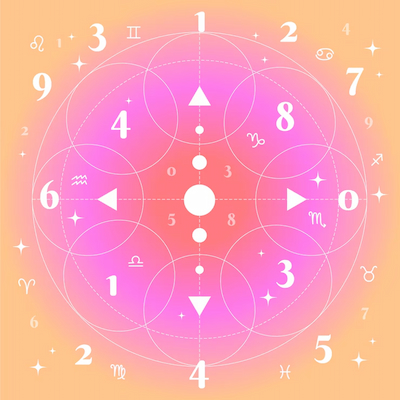
Cepheid variables are pulsating stars that play a fundamental role in modern astronomy, especially in determining cosmic distances. These stars are notable for their periodic variations in brightness, making them valuable tools for measuring the distance between Earth and other galaxies. The relationship between their pulsation period and intrinsic luminosity allows astronomers to calculate their distance with precision, contributing to our understanding of the structure and expansion of the universe.
The cosmic distance ladder refers to the method of measuring astronomical distances using different types of celestial objects as reference points. Cepheid variables are among the main tools in this ladder, alongside other techniques such as supernovae and binary stars. The use of Cepheids in this system has revolutionized our perception of the cosmos, enabling not only the measurement of distances but also the study of the universe’s evolution over time. In this article, we will explore how Cepheid variables work, their advantages, and how they are used in cosmology.
How Cepheid Variables Work in Astronomy
Cepheid variables are characterized by their changing luminosity, which oscillates regularly over time. This pulsation is caused by changes in internal pressure and temperature, resulting in a cycle that can last from days to weeks. The pulsation period of a Cepheid is directly related to its intrinsic luminosity—a principle known as the period-luminosity relation. This means the longer the pulsation period, the brighter the star. This relation was discovered by astronomer Henrietta Leavitt in the early 20th century and is fundamental for using Cepheids as distance markers.
To determine the distance to a Cepheid, astronomers measure its pulsation period. Using the period-luminosity relation, they can then calculate the star’s intrinsic luminosity. With the luminosity known, astronomers compare it to the star’s apparent brightness. The difference between apparent and intrinsic brightness allows for the calculation of distance using the inverse square law of light. This method is effective and has been used to measure distances to nearby galaxies.
Cepheid variables are not only useful for measuring distances within our galaxy but also in more distant galaxies. Through careful calibration of the period-luminosity relation and the application of statistical methods, astronomers can extend this technique to galaxies millions of light-years away. This provides a deeper understanding of the universe’s large-scale structure and crucial data on its rate of expansion.
Additionally, Cepheids are significant in cosmology as they help determine the Hubble constant, which describes the universe’s expansion rate. Studying Cepheids thus provides information not only about distances but also about the history and evolution of the cosmos. The precision of distance measurements based on Cepheid variables directly impacts cosmological theories and our understanding of dark energy—a mysterious force believed to be accelerating the universe’s expansion.

Advantages of Using Cepheid Variables and the Cosmic Distance Ladder
One of the main advantages of using Cepheid variables in the cosmic distance ladder is the accuracy of the distance measurements they provide. The period-luminosity relation is a reliable tool that allows astronomers to make precise measurements essential for constructing a three-dimensional map of the universe. This accuracy is critical for understanding the large-scale structure of the cosmos and determining the positions of galaxies relative to Earth.
Another significant advantage is the visibility of Cepheids in distant galaxies. Even in galaxies millions of light-years away, Cepheids can be detected and measured. This extends the reach of distance measurements and enables astronomers to explore regions of the universe that would otherwise be inaccessible. With these measurements, it becomes possible to trace galaxy evolution and study the universe’s dynamics on larger scales.
Cepheid variables also offer a method of cross-calibration with other distance-measuring techniques. By comparing results obtained from Cepheids with those from supernovae or other methods, astronomers can validate their measurements and increase confidence in their conclusions. This cross-checking is vital to ensure data consistency and usefulness in studying complex cosmic phenomena.
Moreover, using Cepheids in the cosmic distance ladder contributes to understanding the universe’s evolution. By determining distances with precision, astronomers can investigate the history of cosmic expansion and the role of dark energy. Distance measurements obtained from Cepheids have been key in developing cosmological models that explain the origin and evolution of the cosmos, offering valuable insights into the universe’s nature and its future.
How to Use Cepheid Variables and the Cosmic Distance Ladder in Cosmology
Cepheid variables are a powerful tool in cosmology, and their use involves several steps to ensure accurate and reliable measurements. Here are some of the ways Cepheids are used in practice:
-
Identifying Cepheid variable stars: The first step in using Cepheids in the distance ladder is identifying them in nearby galaxies. This usually involves careful observations with powerful telescopes capable of detecting changes in brightness over time. Astronomers analyze large datasets, such as those from space telescopes, to find these pulsating stars.
-
Measuring the intrinsic luminosity of Cepheids: Once identified, the next step is to measure their pulsation period. This measurement is crucial, as the star’s intrinsic luminosity can be determined from the period. Brighter Cepheids have longer periods, and this relation is used to calculate the star’s true luminosity.
-
Applying the distance method to galaxies: With intrinsic luminosity known, astronomers apply the distance method. By comparing intrinsic luminosity to apparent brightness, they calculate the distance to the Cepheid. This method is applied to galaxies millions of light-years away, helping to build a 3D map of the universe.
-
Astronomical calibration with stellar pulsations: Calibrating the period-luminosity relation is essential. Astronomers measure Cepheids in different galaxies to ensure the relation holds in various environments. This calibration is fundamental to maintaining the precision of distance measurements.
-
Comparing with other distance measurement techniques: Cepheid-based measurements are often compared with results from other methods, such as Type Ia supernovae or eclipsing binaries. This comparison helps validate findings and enhances measurement reliability. Combining methods is a common approach in cosmology.
-
Impact on understanding the universe’s expansion: Finally, Cepheid-based distance measurements significantly impact our understanding of the universe’s expansion. By determining the expansion rate with precision, astronomers can explore the nature of dark energy and its effect on cosmic evolution. Cepheids thus play a vital role in building cosmological models that explain the universe’s history.
Thanks to their regular pulsations and their relation to luminosity, Cepheid variables offer an effective way to measure cosmic distances. Carefully applying these methods allows astronomers to explore the universe with greater precision and depth, revealing the mysteries of the cosmos’ structure and evolution.

Enjoyed Learning About Cepheid Variables and the Cosmic Distance Ladder?
Cepheid variables and the cosmic distance ladder are fascinating topics that help us better understand the universe we live in. Through precise distance measurement, we can explore galaxies and cosmic expansion, uncovering secrets that were once out of reach. The study of these pulsating stars remains a vibrant area of astronomical research.
We invite you to dive deeper into this intriguing subject. Cepheid variables not only illuminate the path toward understanding the universe but also connect us to a vast and mysterious cosmos. By exploring these stars and their properties, you are contributing to the advancement of human knowledge about the universe.
Frequently Asked Questions
What are Cepheid Variables?
Cepheid Variables are stars that change brightness. They pulse every few days or weeks. This happens due to changes in their temperature and size.
How do Cepheid Variables help with the cosmic distance ladder?
These stars act like markers in the sky. You can measure how far they are. This helps calculate distances in space and build the cosmic distance ladder.
Why are Cepheids important to astronomy?
They help astronomers understand the size of the universe. Without them, measuring distances between galaxies would be much harder.
How is the brightness of Cepheid Variables measured?
Scientists use telescopes to observe changes in brightness over time. This lets them calculate the distance to the star.
Where can I see Cepheid Variables?
You can find these stars in many parts of the sky. Some are in well-known constellations. A good telescope can help you locate them!





